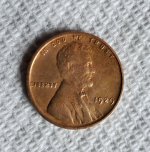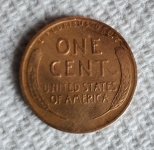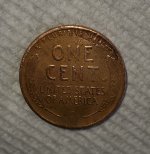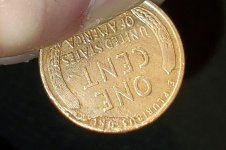Could someone point me in the right direction to find out if this is an error strike. I haven't seen any like it and I wouldn't think error strike if the letters weren't raised. I would think if it was damaged at some point it would have removed the letters but instead the letters are raised and prominant as if the blank was struck after the damage. There is also what appears to be an extra detail raised by the end of the leaf. It is not damage but part of the coin that can't be removed. It almost looks like an extra part of the outer rim.
Attachments
Last edited:







